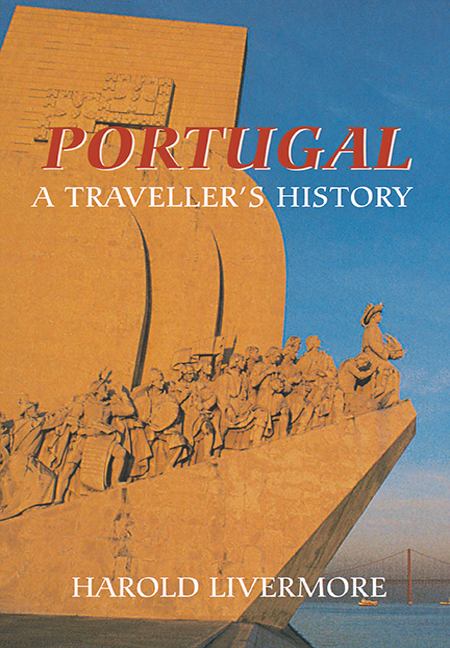Book contents
- Frontmatter
- Contents
- List of Illustrations
- Foreword
- 1 Introduction
- 2 Portugal in History
- 3 Before Portugal
- 4 Islamic Portugal
- 5 Architecture
- 6 Painting
- 7 Music
- 8 Birds
- 9 Fishing
- 10 Portuguese Wines
- 11 Lisbon
- 12 North from Lisbon
- 13 Oporto
- 14 North of Oporto
- 15 Interior Portugal
- 16 Alentejo
- 17 Algarve
- Afterword
- Index
- Frontmatter
- Contents
- List of Illustrations
- Foreword
- 1 Introduction
- 2 Portugal in History
- 3 Before Portugal
- 4 Islamic Portugal
- 5 Architecture
- 6 Painting
- 7 Music
- 8 Birds
- 9 Fishing
- 10 Portuguese Wines
- 11 Lisbon
- 12 North from Lisbon
- 13 Oporto
- 14 North of Oporto
- 15 Interior Portugal
- 16 Alentejo
- 17 Algarve
- Afterword
- Index
Summary
The high road to the east from Oporto strikes out for a very different Portugal which the writer Miguel Torga (1907–95), who was born there, called a ‘marvellous kingdom’. It is not a kingdom, and has no name but that bestowed on it from outside, Trás-os-Montes, ‘beyond the mountains’. The range in question is the Serra do Marão, rising to 4,250 feet. The pass at the Espinho commands a vast panorama. Those who dwell beyond are their own masters: ‘Para cá do Marão, mandam os que cá estão’. It is a large land-locked province whose capital Bragança is far away near the border with Spain. It is quite different from the teeming maritime Minho which wears its heart on its sleeve (at least the seamstresses of Viana do). The rivers of the Minho go directly to the sea, whilst those of Trás-os-Montes rise near the Spanish border in the north and first find their way to the Douro. The largest of these is the Tâmega, already a broad stream when it flows under the great Roman bridge at Chaves, which is certainly in Trás-os-Montes, but passes through Basto and Amarante in the Minho, and pours into the Douro some twenty-five miles east of Oporto. The historical border of the province seems not to have been fixed. It comprises the two districts of Bragança and Vila Real. More recently the city of Oporto has been made the centre of the Douro Litoral, which includes both sides of the river, and Vila Real has become the capital of the Alto Douro, and includes Lamego south of the river.
On leaving Oporto, the road, whether it knows it or not, traverses the Douro Litoral. The first river to cross is the Sousa, a small stream flowing through a wide valley. Its name has been carried all over the world. In the eleventh and twelfth centuries the only family that could match the Maias were the Sousas who acquired many estates. The Paço de Sousa stands a little off the main road near Paredes, and was an ancient hermitage when the Sousas made it their Benedictine monastery under Egas Moniz, the tutor of Afonso Henriques: he is buried in the church, which exceeds the usual Romanesque building of the time. Egas’ successor as mordomo-mór was Gonçalo Mendes, ‘o Sousão’ (1157–67).
- Type
- Chapter
- Information
- Portugal: A Traveller's History , pp. 144 - 158Publisher: Boydell & BrewerPrint publication year: 2004

